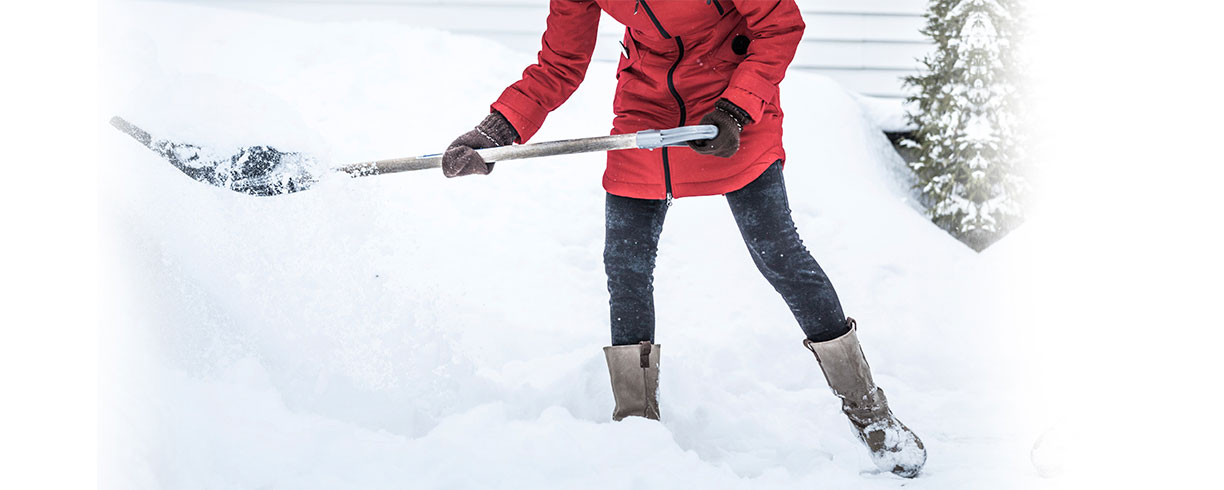The first snowflakes may bring out our inner child, but the first heavy snowfall is quick to bring us back to the reality of winters: snow shovelling. Whether light and fluffy or heavy and wet, snow has to be cleared away!
The first snowflakes may bring out our inner child, but the first heavy snowfall is quick to bring us back to the reality of winters: snow shovelling. Whether light and fluffy or heavy and wet, snow has to be cleared away!
While some enjoy shoveling and see it as an opportunity to practice an outdoor activity, others dream of a snow blower. But in both cases, snow shovelling is hard and strenuous work on the entire body, especially on the heart and back. Below are five safety tips to shovel snow without hurting yourself.
1. Wear the proper clothes and footwear
Before going out, be sure to cover every part of your body to keep warm and prevent frostbite. Toque, gloves or mittens, scarf, water-resistant boots with good traction are essential. And of course, don’t forget your coat!
2. Warm up your muscles and your heart
Before you start shovelling, it is essential to warm up your body. Jump up, walk rapidly and do a few shoulder rolls. Stretch the muscles in your arms, legs and spine. Do these exercises for a few minutes to activate blood circulation.
3. Make a healthy choice: use a light shovel
It’s better to push the snow to the side rather than to lift it and throw it. Use a light-weight snow scoop and push only small amounts of snow at a time. If you must throw a load of snow, choose a small light shovel, with a blade that isn’t too large and a shaft that is long enough so you don’t need to stoop to shovel.
Don’t throw the snow more than one meter high and avoid twisting at the waist: turn your feet in the direction you’re throwing, bend your knees and use your arm and leg muscles. Keep your back straight. And don’t forget to breathe properly while shovelling: breathe in as you lift the snow and breathe out as you throw it.
4. Work at a steady reasonable pace
To avoid injury, it is essential to shovel at a steady, moderate pace. The faster you try to finish the job, the higher the risk that you’ll injure yourself.
5. Take frequent breaks
Whether shovelling light or heavy snow, take a break every 15 minutes at most and wait 5 minutes before starting again. During a snow storm, it is better to get out several times to clear the snow rather than let the snow accumulate. Above all, listen to your body: if you have trouble breathing or feel faint, stop shovelling immediately and take a rest.
Snow shovelling is not a risk-free activity: it can result in very serious, even fatal, injury. Although it is a great way to keep fit, shovelling requires a greater physical effort that should be avoided by anyone with a history of heart disease, high blood pressure or high cholesterol levels. People who are older or lead a sedentary lifestyle should also abstain from shovelling and delegate the task to someone else.
Shovelling, an obligation
Your driveway, your entrance, your balcony, your emergency exits must be cleared and safe at all times for anyone who needs to use them: from the postman to the deliveryman, the visiting friend to the neighbour’s kids, including you and your family! Most Fire departments have regulations regarding snow clearance and it is also your obligation, in terms of civil liability, to be vigilant to reduce the risk of visitors slipping and injuring themselves.
So on your marks, get set, shovel!

























